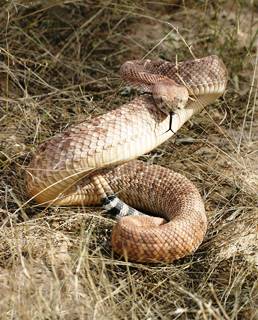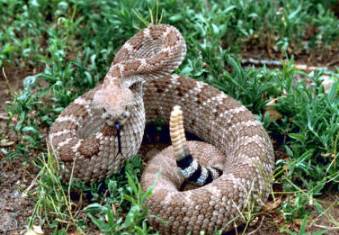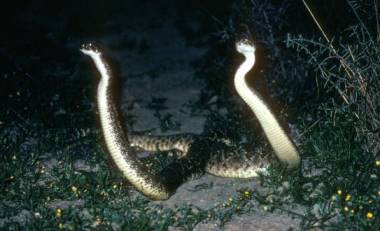|
 Western Diamondback Source: USFWS |
Back to Animals
The Eastern Diamondback Rattlesnake is one the largest venomous snakes in the world. At 8 feet long, it is certainly the largest in the Americas. Rattlesnakes are part of the snake family called pit vipers. This is because they have small temperature-sensing pits on each side of their head that help them find prey in the darkness.
